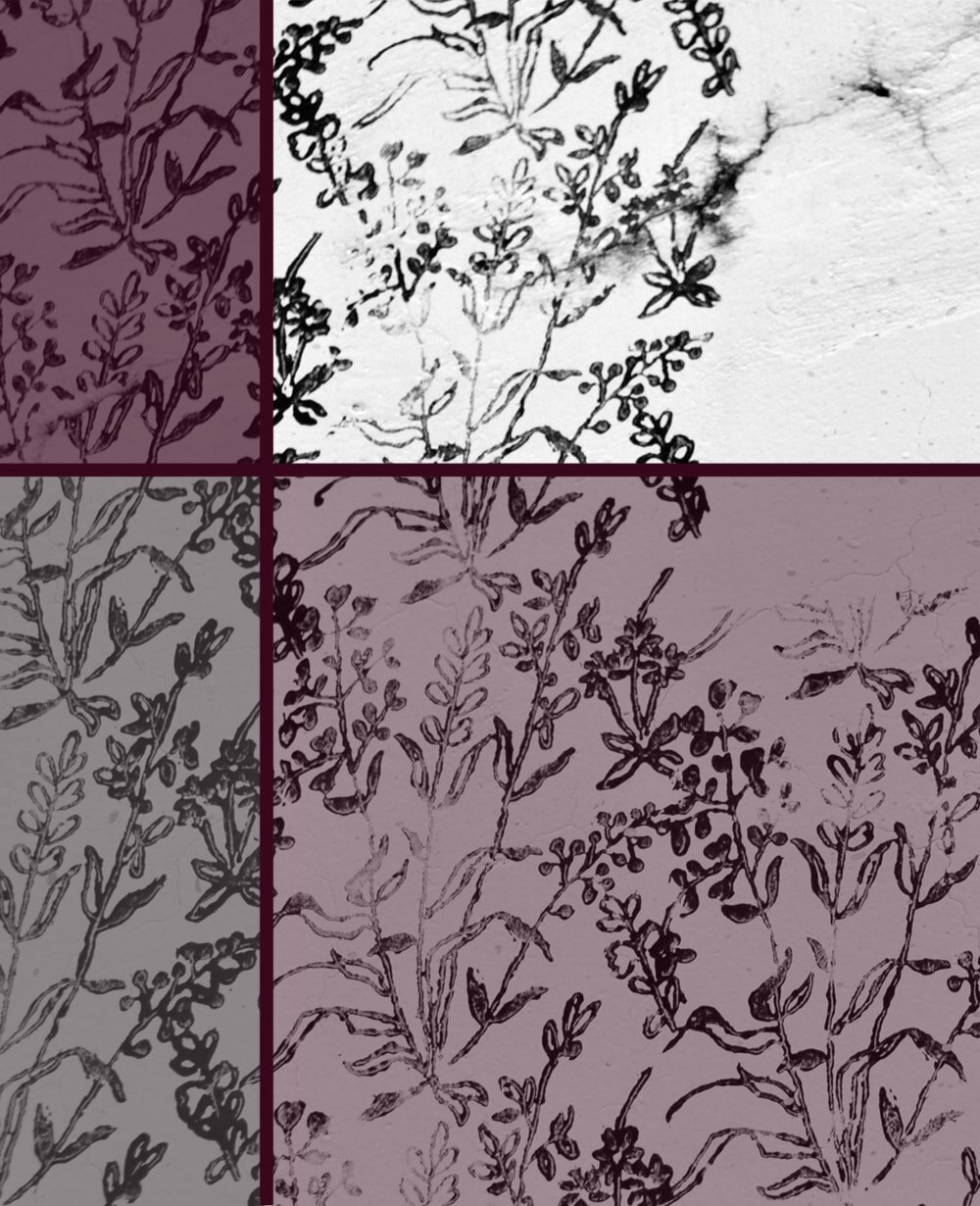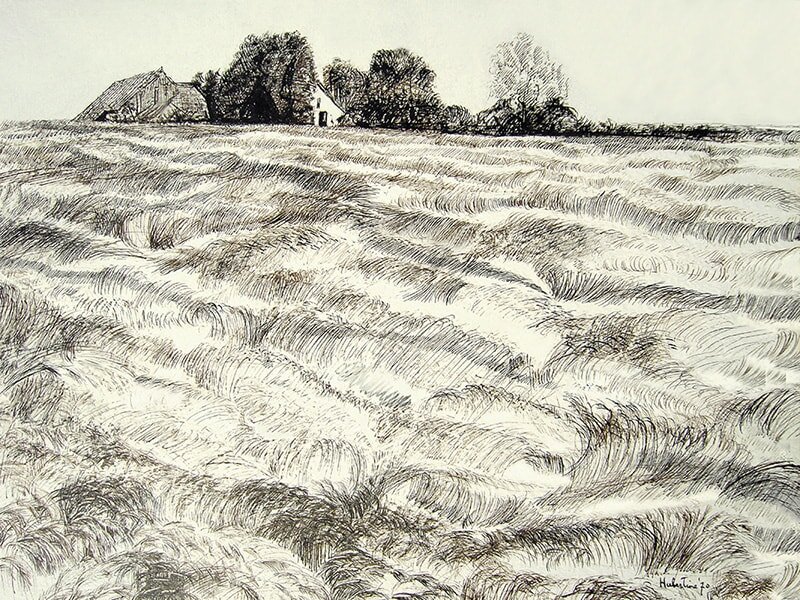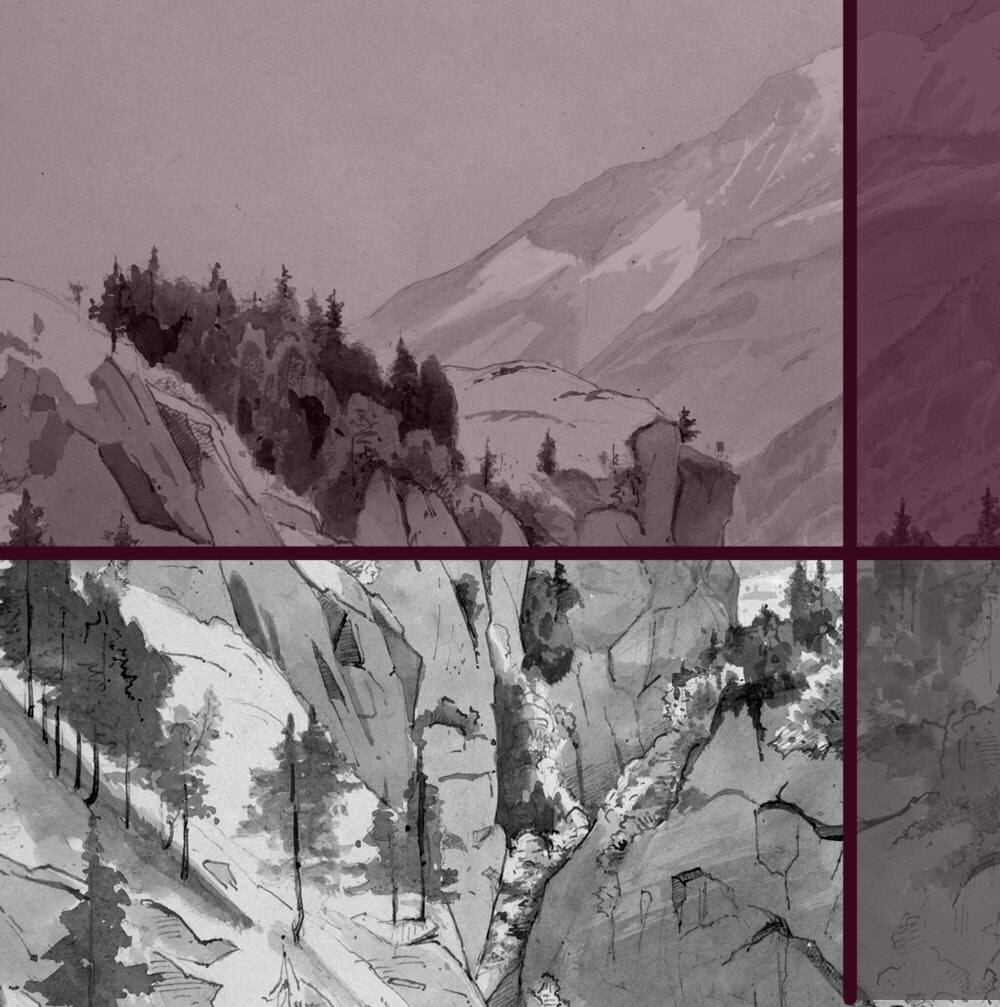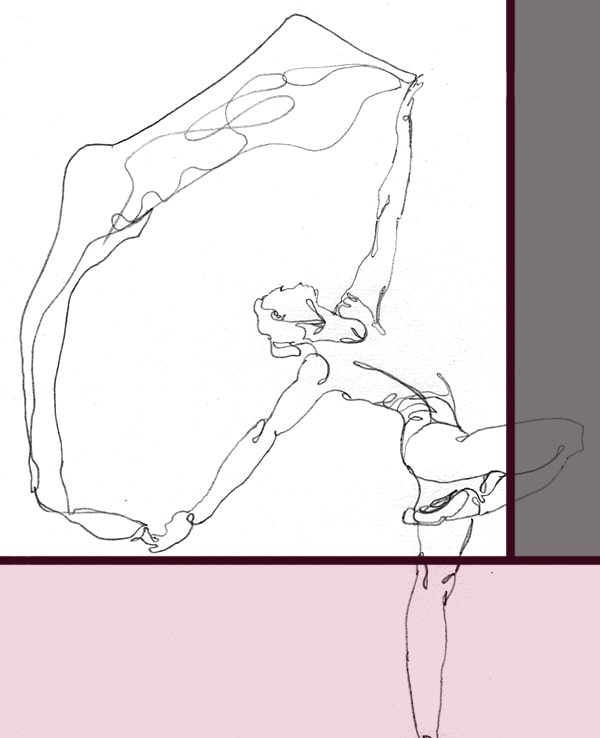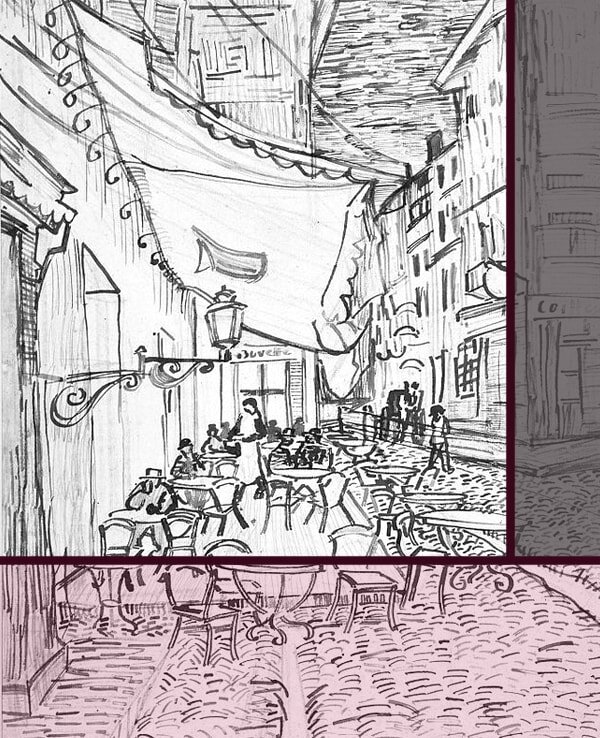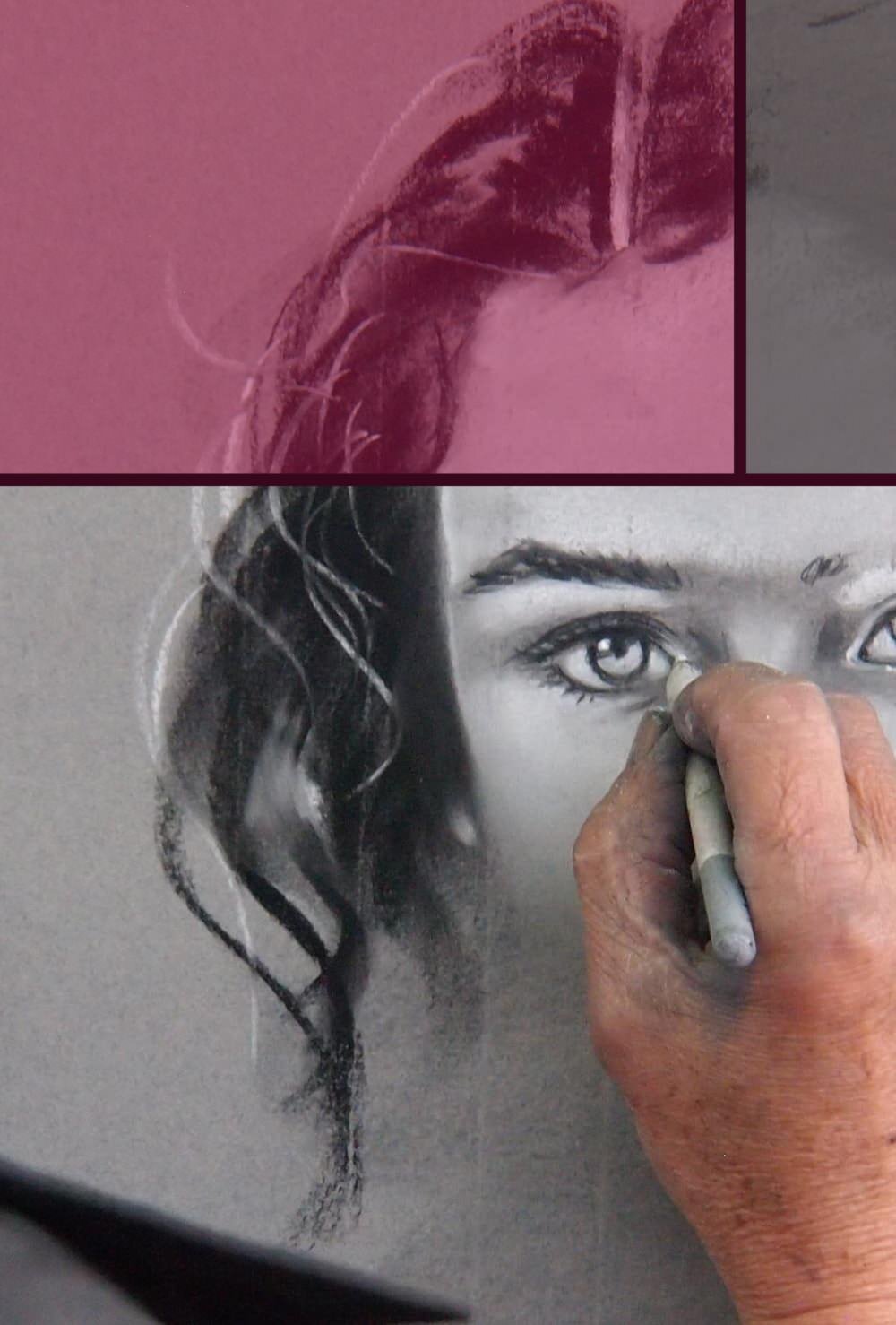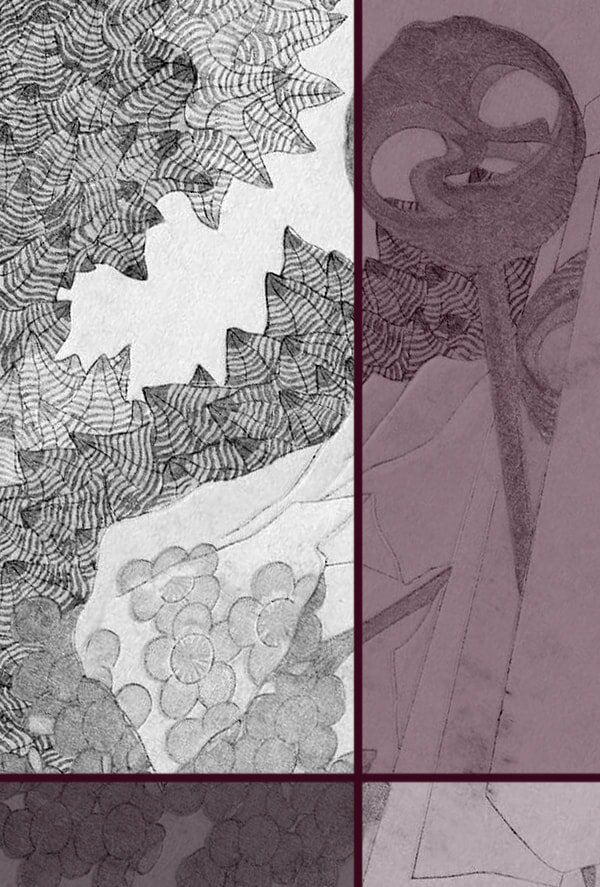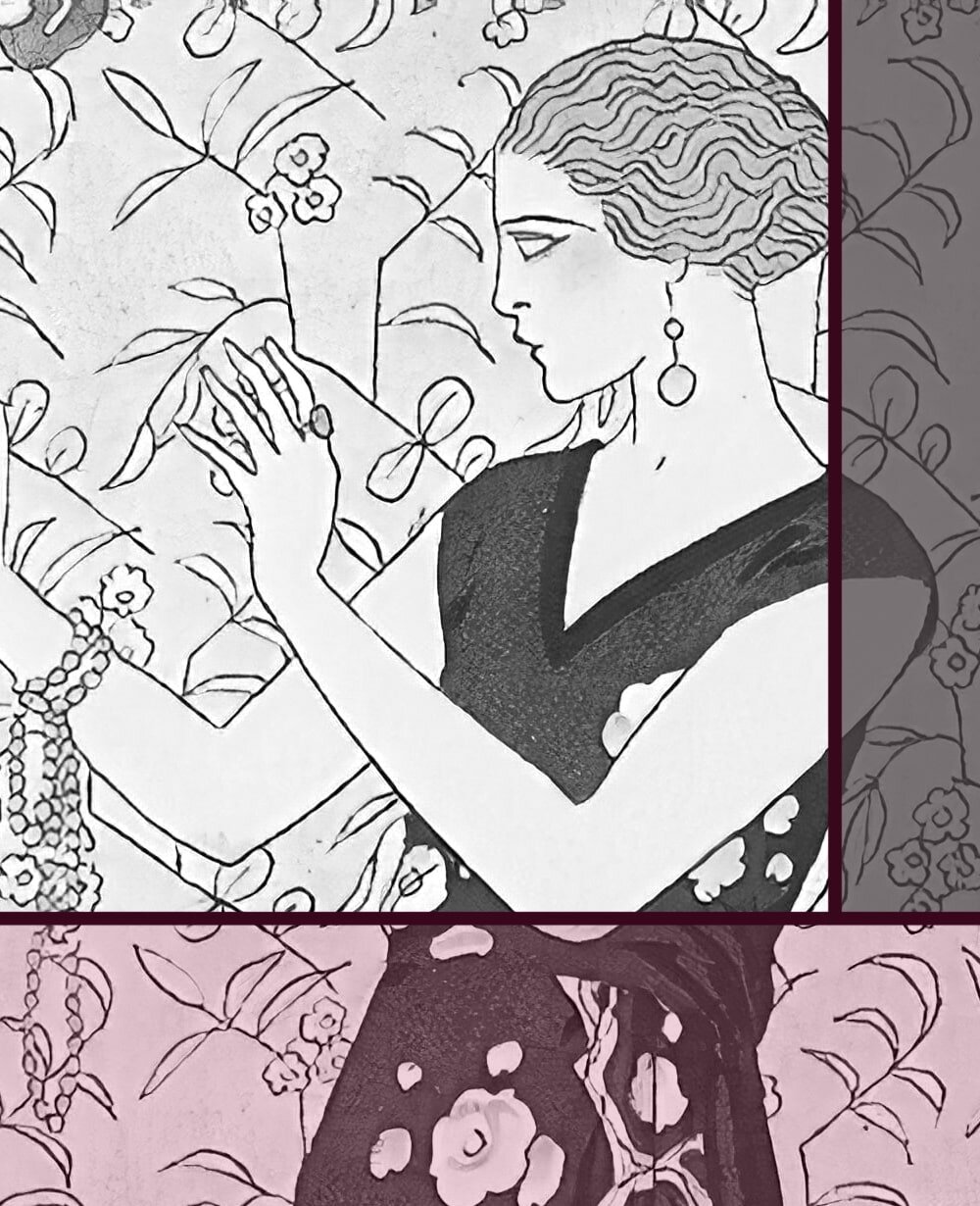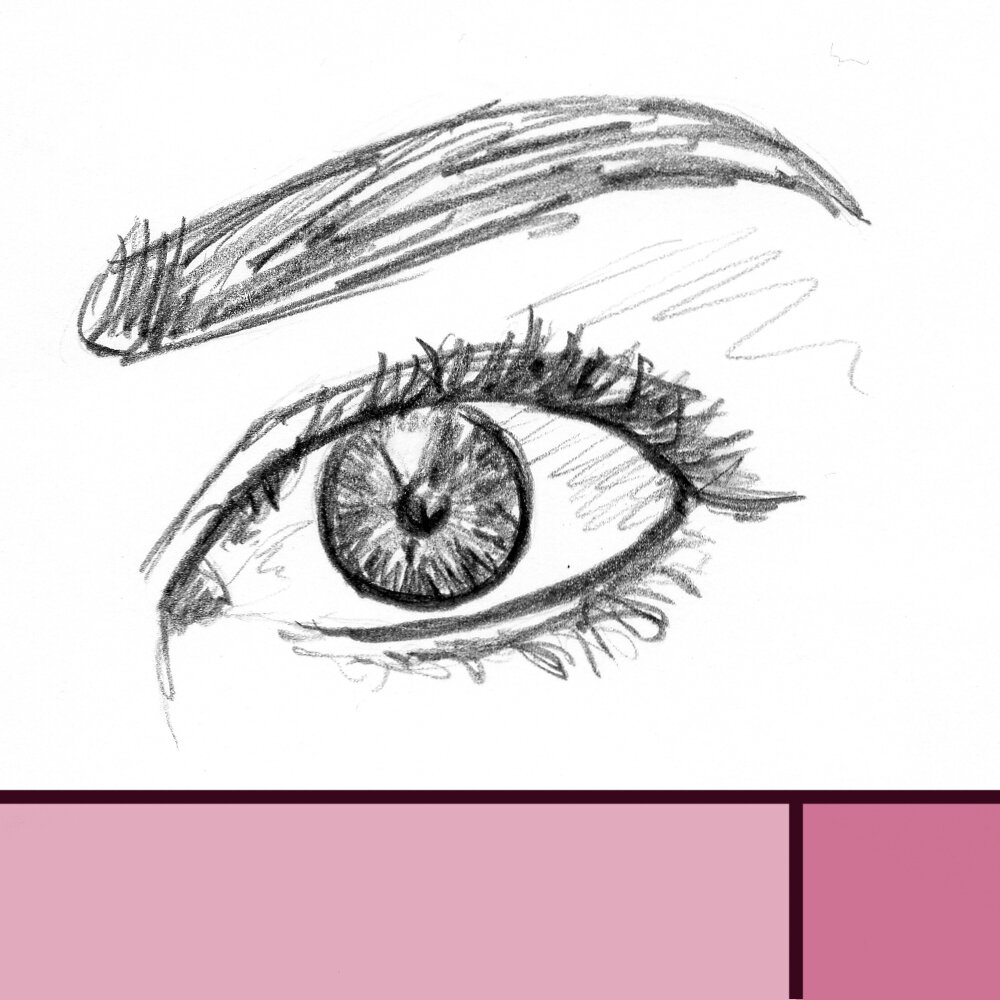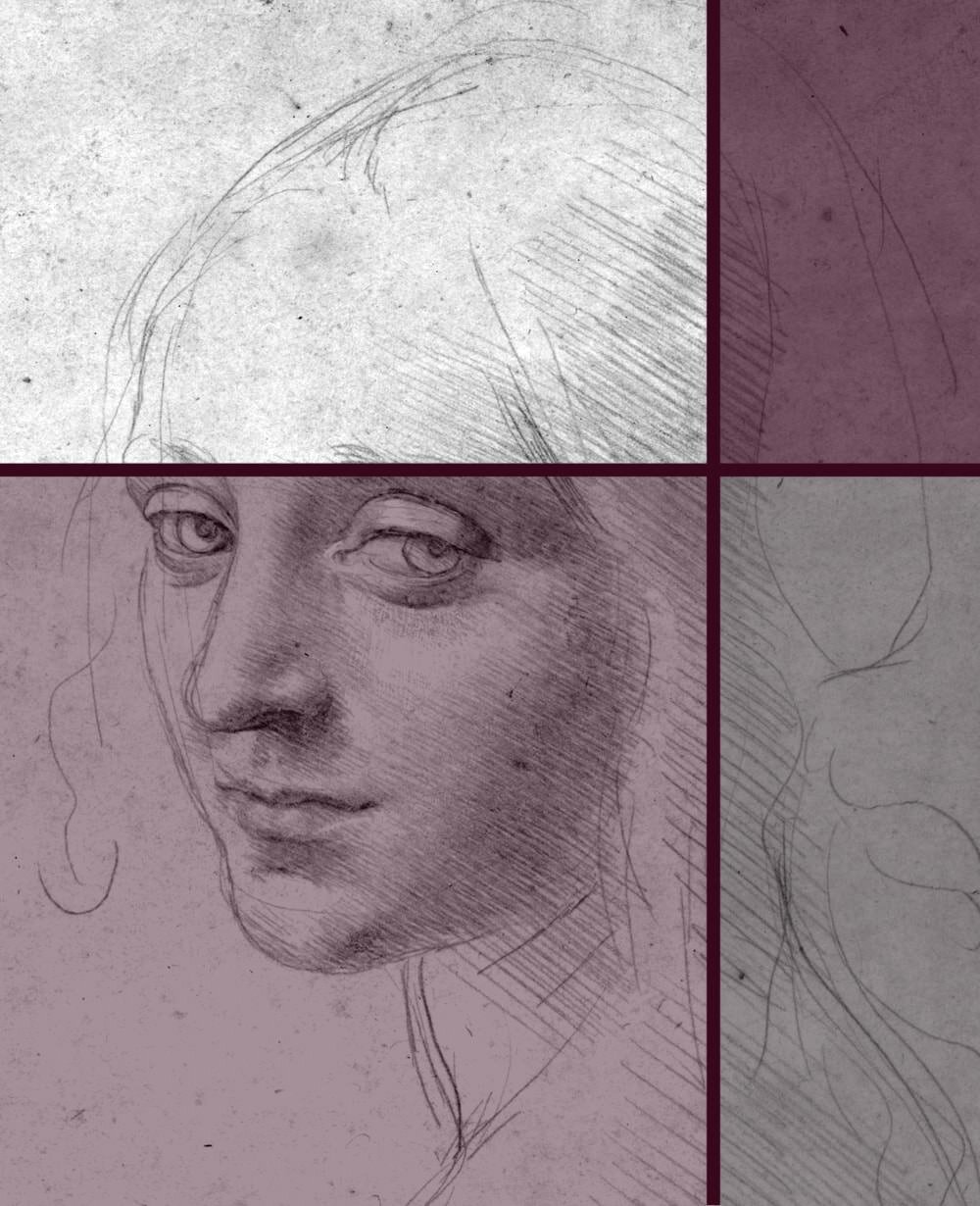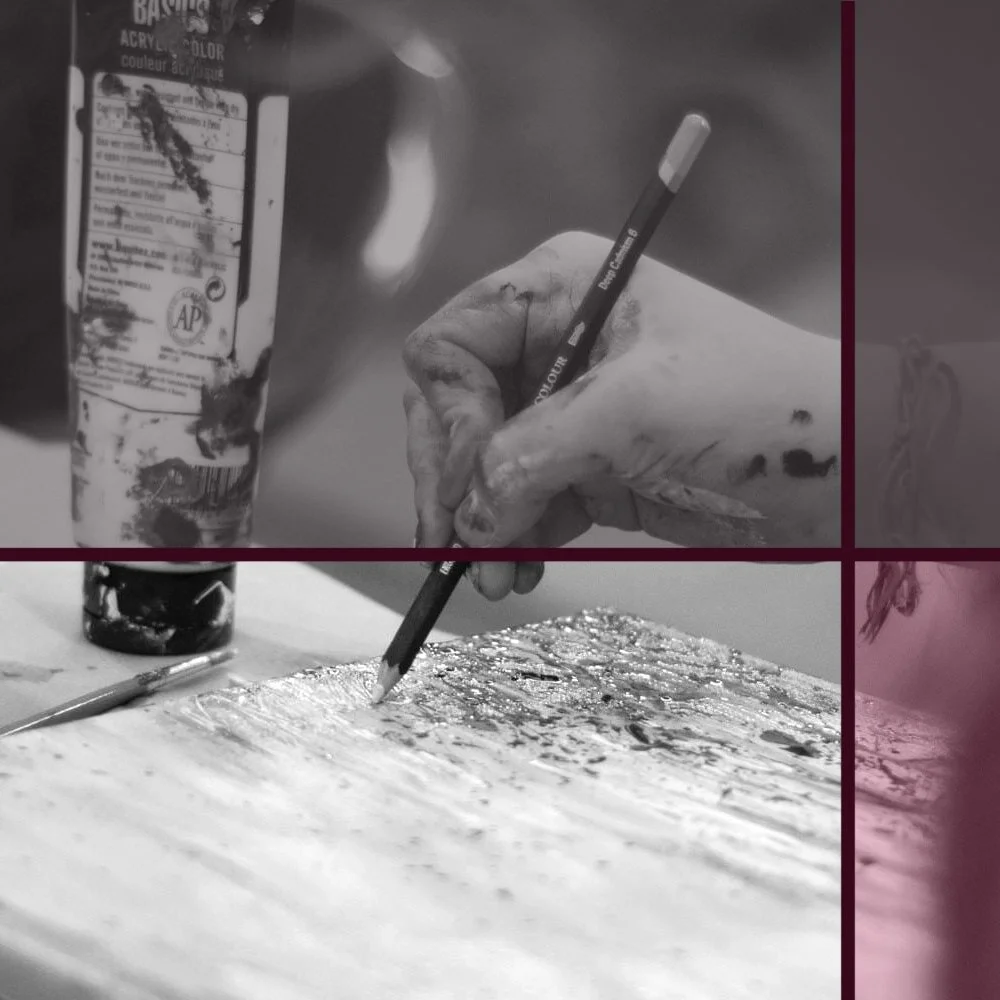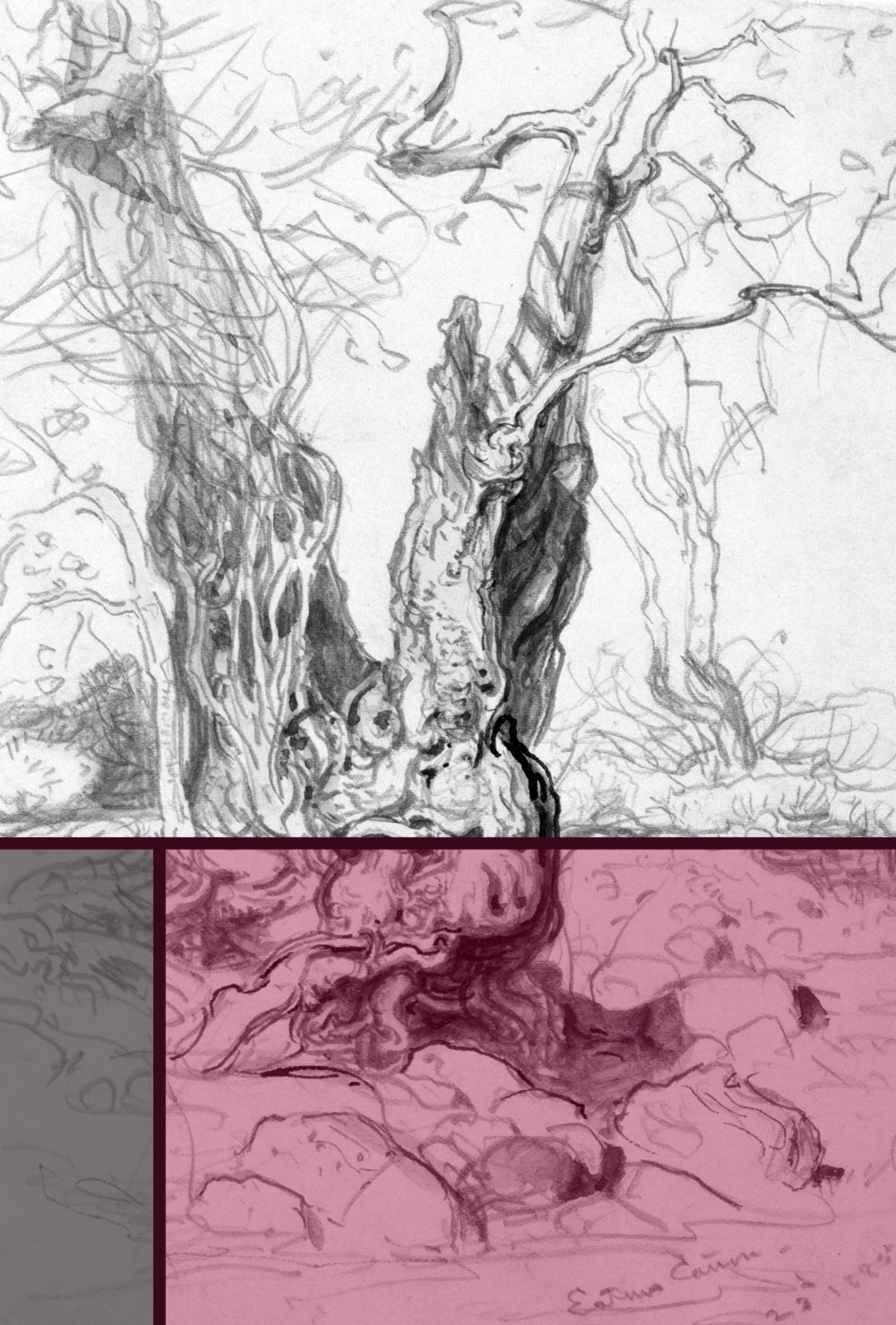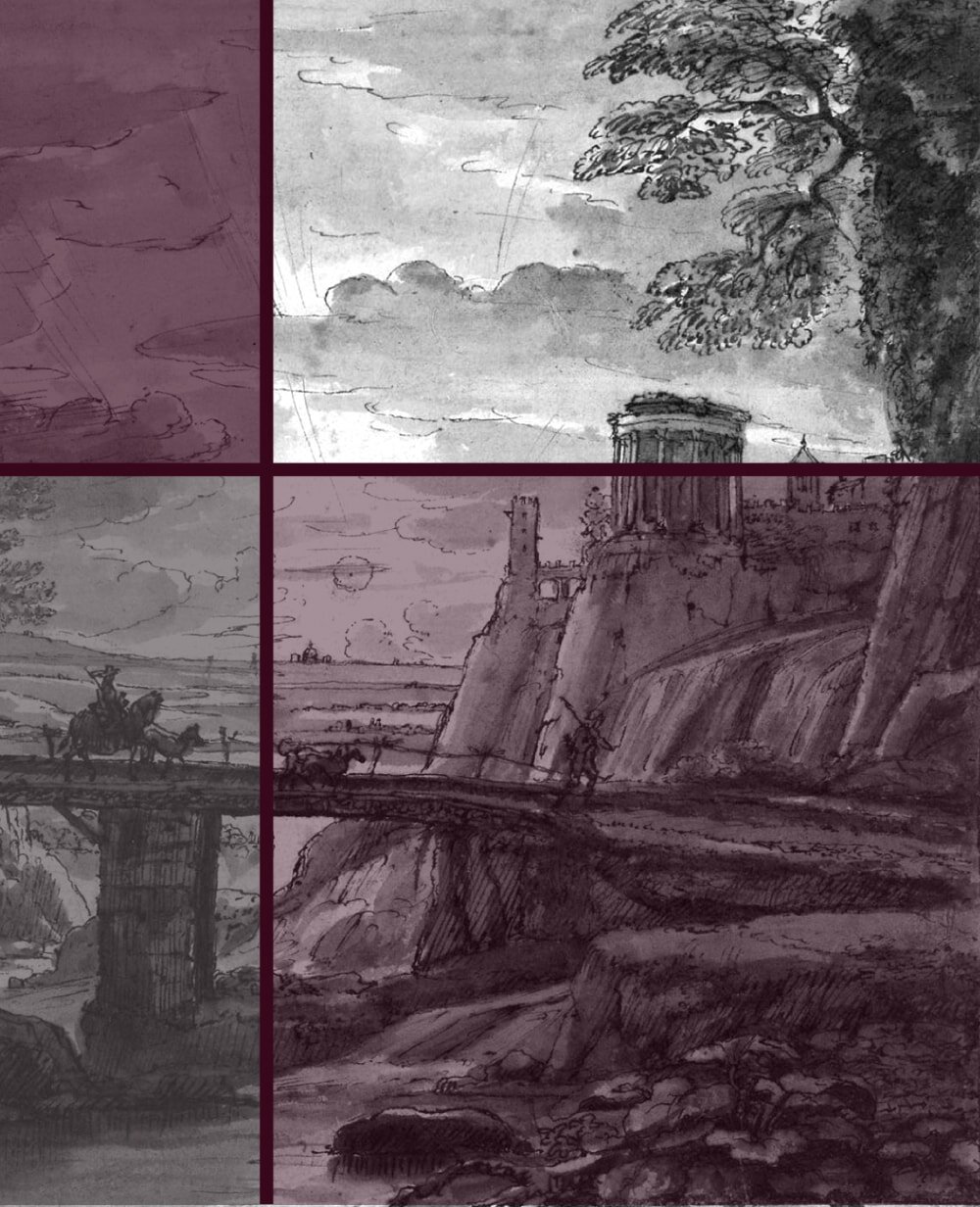7 great Exercises to Improve your Landscape Drawing Skills
Sketching beautiful and interesting landscapes is amazing, but it does take a little practice to get the trickier parts of a nature view just right.
Not to worry, these five exercises will help beginners find their footing and pros become even better at this amazing pastime.
1 Sense and describe
This easy but very effective exercise is great practice for every kind of drawing, but especially with landscapes it really makes a difference.
Before you even lift your pencil (or brushes) take a moment to employ all your senses. Describe, in one sentence each, what you can see, hear and smell. You can do this out loud or in your head. If you’re drawing from a photograph, simply use your imagination.
Using all your senses you would see the grass and sky and trees, hear the little stream and the wind and smell resin in the air.
If you can, also try to imagine what the parts of your subject might feel to the touch, such as rough tree bark or velvety flower petals.
The goal is to properly get to know your subject. Employing all your senses will take you from being a neutral observer right into the scene, so you become part of it.
Being ‘in the moment’ like this will automatically flow into your linework and enhance the quality of your sketch quite drastically.
Plus, if you use a lot of adjectives in the description (such as smooth, aromatic, prickly…) they’ll come in super handy when working out texture or shapes.
Visit my post 19 expert Tips for creating stunning Landscape Sketches for more tips on drawing excellent views of nature.
2 Plagiarising encouraged
Most of us are a bit uncomfortable copying another artist's work, because it can feel very much like stealing. When, in fact, it's an exercise that almost all professional artists, past and present, have used to improve their skill.
Copying a landscape drawing that you like is a fabulous way to learn about successful compositions, the use of light and shade and a variety of textures.
This Landscape with an imaginary view of Tivoli by Claude Lorrain would make an excellent object to copy and learn from. Just look at the gorgeous play of light and shadow!
It doesn't need to be an exact copy at all, a rough sketch is perfectly fine. It's about getting to know the work, not becoming a professional forger.
But do try to copy the artist's specific way of drawing or painting. If they use bold, dark lines try to imitate them, even if you usually draw a lot lighter.
You can do the same with paintings by just interpreting the brush strokes with your pencil instead.
While you draw, think about what you like about the work in particular. What would you do differently, if this was your work?
3 The power of suggestion
For this exercise all you need to do is pick a view with a relatively large area of the same pattern or texture. That could be a wood with a thick canopy of leaves, the beach with long stretches of fine sand or a garden view with a wide, gravel footpath.
Your mission, should you choose to accept it, is to draw the view in only a few minutes, trying to simplify the texture as much as possible with it still being recognisable as what it is.
This sketch of a landscape with a lake and trees is the perfect example how little detail is needed to suggest tree foliage.
This is a great training to learn how to suggest, or hint at, parts of a landscape without spelling it out leaf by leaf, pebble by pebble.
You might need to try different approaches until you find an approach that works well. Experiment a little and always try new, interesting techniques to suggest a material in your sketches.
Knowing when and how to let the viewer's brain fill in the blanks is a very important and handy skill to have in your repertoire. It'll make your drawings more interesting and save you a lot of time.
4 Come, rain or high water
Most of us hobby landscape artists only move outside when it's comfortably warm and sunny. It is true, a bright spring day with the light dancing around the lake and the new leaves breaking through in their soft, velvety green is one of the prettiest things you can possibly draw.
But if you want to grow as an artist and create truly atmospheric, deeply moving pieces it can be a good idea to occasionally move outside when the weather is less perfect.
Next time it's misty, or very windy, or simply chucking it down take your jacket and sketchbook and do a couple of quick sketches outside, from a sheltered spot under a tree perhaps.
When you're out there, notice how the lack of sun, layer of rain, frost or mist changes the light and appearance of the plants outside.
Try to express the mood of the weather in your lines and let it flow through you into your work.
Fog will ask for light, undefined shapes. Storm might need a stronger, more energetic approach. And if it's simply freezing? Slow, rigid lines can work great for that.
A landscape right before a storm can make for a very interesting subject with a lot of atmosphere.
Top tip: you can keep a small sketchbook and short pencil inside a clear plastic pocket while you draw, so the rain won’t ruin the paper.
For more tips about drawing outdoors pop by my article 8 handy Tips for Drawing and Painting Outside.
5 A flaw is the plan
As I've mentioned in my post Why Drawing Landscapes is so Popular, one of the best things about nature is that it does not have the man-made uniformity and flawlessness. No two things are ever the same, everything is unique.
In fact, it's the imperfections in nature that makes it such an interesting subject to work with. A crooked tree has a lot of character, just like an oddly shaped lake or a chipped mushroom, they all tell a story.
The asymmetrical shape and that one dead branch on the left give this tree a lot of character.
All you need to do is pick one object outdoors, like a tree, a flower or a pinecone. Then sketch it with its flaws and imperfections as the focal point.
Practising this regularly will help you to learn how to draw that tree or that rock, not a tree or a rock, so your sketches are always as unique as the subjects they're rendering.
6 All good things come in threes
For this exercise find an interesting view for you to work with. Any landscape you like will do, such as your garden, a beach, a woodland clearing. Then you’re going to sketch the scene, for as long as you like, in three different compositions.
You could change the angle (from above or below), use different formats (such as horizontal or vertical), draw it far away or from very close, even wait for different weather conditions.
One Landscape, three different compositions.
My collection of articles about composition has a lot more examples for you.
The point is to help you break away from your usual preferences, spice up your practice and try out new compositions. Art has no greater enemy than stagnation and this exercise will combat that.
7 Monocrop fun
Next time you’re out and about and happen to come across a big patch of the same kind of plant, stop right there and get your sketchbook out.
Agricultural fields, such as wheat or corn, are brilliant for this sort of thing. Anything that looks rather dull and monotonous is what you’re looking for. A simple patch of trimmed grass in the park is fine too.
The goal of this exercise is to figure out a way to draw the patch of that boring-looking monocrop and make it look super interesting.
View on Echichens (1970) by Hubertine Heijermans.
You can try varying your strokes, change intensity, type, texture and direction. You could use colour or even tools that aren’t part of the usual art-kit, like sponges, twigs, toothbrushes.
Be as vague and expressive in your interpretation as you like, no need to be faithful to the original. Detailed or abstract, all is fair game.
If you can make a monotonous patch of wheat look fascinating you can really do anything.
Visit my exercise collection for many more fun things to practice!
Did you enjoy this article or feel like you have anything else to add? Feel free to leave me a comment below!
If you like this post, please share it, so others may like it too!

